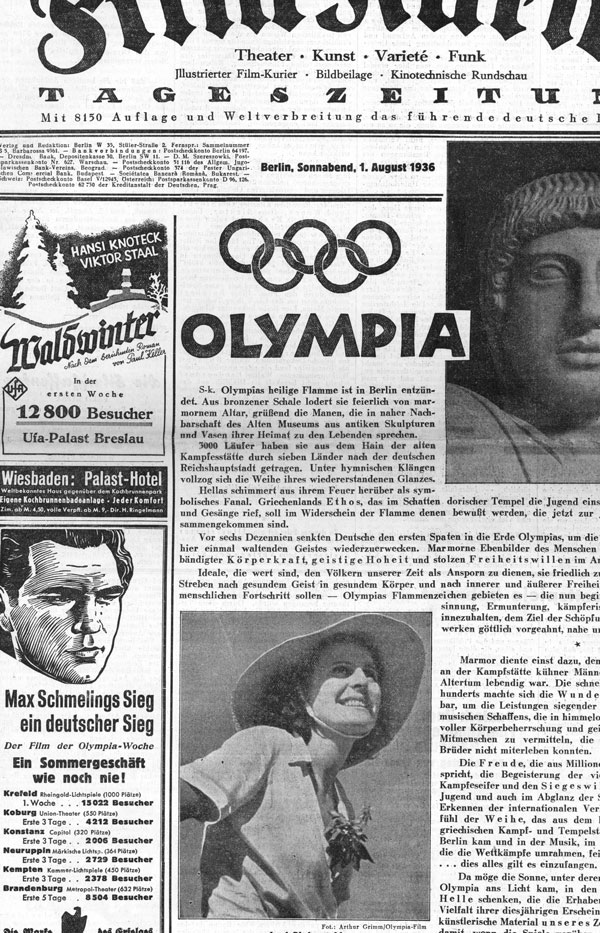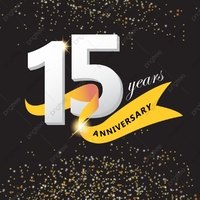Leni Riefenstahl's two OLYMPIA films (1938)

BELOW, our ultra-rare 24-page high-gloss paginated Olympia Film G.m.b.H. over-sized brochure, dated August 1936, the same month that the actual Games took place. The brochure showed behind-the-scenes camera positions, Leni Riefenstahl directing, and the superb film editing facilities in Haus Ruhwald on the Olympic grounds occupied by the Director and her crew. Olympia Film G.m.b.H.was founded 9 December 1935, (end of business per 31 December 1939, liquidated 9 January 1942) for the purpose of funding the film through support of the IOC and the Reich government. All subsequent marketing and promotional materials were thereafter issued by the Tobis Filmkunst film studio, which distributed the film worldwide in 1938.

From the Official Report, Volume 1, Organisationskomitee für die XI. Olympiade Berlin 1936, E.V; Berlin:
The Olympic Film Company had been given the sole rights for taking pictures and making a film of the Olympic Games by its patron, Reich Minister Goebbels. In consequence, the directress of the company had unusual privileges during the Games. "
..........
"The creators of the Olympic Film were mentally and materially prepared on the opening day of the Games. The business manager had installed the administrative offices in the buildings of the Geyer Works on Harzer Street, in the south-east of Berlin. The cutting and archive rooms were ready. Head Manager Traut had found accommodation for his staff in the quiet "House Ruhwald," situated in a secluded park near the Spandauer Chaussee, only a few minutes from the Reich Sport Field. Here the cars waited, here the vast amount of material was stored. From here, the groups of cameramen started for their daily work on the sites. A staff of 80 camera-men and assistants and some 30 helpers lived in House Ruhwald. Four managers, first among them H. Kiekebusch, were at work. Each one of them had his hands full.
A special film department under Frau Leni Riefenstahl had started for Greece by car. They followed the torch bearers. Another department was later sent to Kiel for the yachting regatta. A permanent liaison group had its headquarters at the Olympic Village. They caught upon any subject in connec tion with the daily routine of the male competitors of the Games that might be interesting for filming. Another group was housed in Grünau in order to cover the training and the regatta. Still another group, under Manager Zielke, had started for the Kurische Nehrung. Skilled porters were ready in the Reich Sport Field to move and remove the apparatuses, the towers, etc. House Ruhwald -"Forest Rest"-had to be true to its name and was to provide a real home for the camera people during the preparatory period, as well as during the Games. Dormitories had been installed, storage room for the material, repair shops, offices and a canteen where 160 camera people were served daily. Endless transports loaded with new film material went backwards and forwards between the Reich Sport Field, House Ruhwald and the Geyer developing firm. Every section of film was examined on the following day."
The man who critically oversaw and managed the storage and logistics of making certain that 500,00 meters of raw film stock from Kodak, Agfa and Perutz with two dozen various ISOs were available to the fifty-six cameramen shooting the Olympic Games in the Berlin, Kiel, and the Grünau sports locations was none other than Johannes Häußler, who had directed the infamous silent then sound versions of the Nazi 1932/33 propaganda film Blutendes Deutschland.
---------
The two original Czech language Tobis Filmkunst red and blue design posters for OLYMPIA (shown below, as well as on the poster gallery page) are unique. They were published by Tobis for Czechoslovakia in 1938 once the film was released internationally, but of course that country soon disappeared as it was absorbed into the Greater German Reich. Other copies of these two posters have never been discovered. The exact same blue poster, but with the German language wording, is displayed in the permanent collection of the Deutsche Kinemathek-Berlin Film Museum (Potsdamer Str.2).
In terms of Czechslovakia, the 1986 book by Cooper C. Graham Leni Riefenstahl & Olympia states on page 197:
Our two 1938 Czech language film posters printed by TOBIS FILMKUNST in Prague using the German poster graphics were thus never used. No wonder these two posters were not in Leni Riefenstahl's own private archive, which was the most extensive one in existence at the time of her death.
In January 2014, the Collection acquired the extremely rare original 1939 French poster of the Part I of the film, which can be seen in the Poster Gallery here, and the super–rare original poster for the film from Finland, here. In June, 2015, the Collection acquired the French poster for Part II of the film, which can be seen here.


In May 2010, fifty original Tobis Olympia film stills (Standfotos, lobby cards) were won at auction in Berlin, and are now held in the Collection as well. Original stills from Olympia are exceedingly rare and it can be decades before one or two surface on the open market. Acquiring fifty stills in one lot was unprecedented. A few of them are displayed here. In 2014, a further ten stills for the film were obtained as part of a "swap" between collectors. 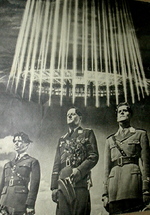
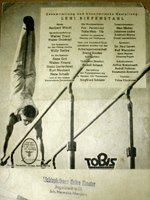
In August 2014 two very rare A4 sized colourised film sheets, used with back lighting in cinema foyers, were purchased. The first one is at the top of this page - the magnificent stadium at night, lit with massive Klieg lights first employed in Nürnberg by Albert Speer in 1934. The other colourised film sheet is below, of the three uniformed equestrian athletes on the victor's podium. Interestingly, Tobis Filmkunst actually used just these two images in a montage cover for their black and white cinema flyer on the film, which is show to the left here. In November 2018 we won at auction 20 more original lobby cards and 4 press photos from the film which we did not have. Today eighty-five different Olympia lobby card stills and three press photos can be found in this Collection.
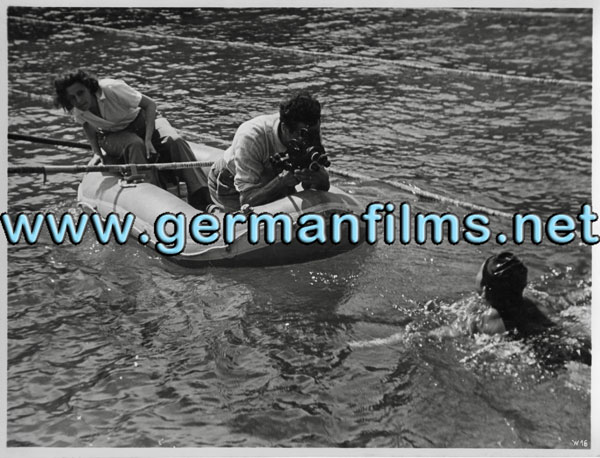
ABOVE: Leni Riefenstahl with cameraman filming a swimming pool dive scene from OLYMPIA ---- an original Tobis Filmkunst press photo, approximately 6 x 9 inches, from our Collection.
In early 2024 we won at auction the ultra–rare original 56 pp. cinema owners' guide (Reklame–Ratschläge) for the two films, with a dozen pages of the German posters for both films, as well as various newspaper advertising graphics, and a wealth of PR background material. These two pages of dot matrix prepared newspaper ads are shown for the first film, Fest der Völker:
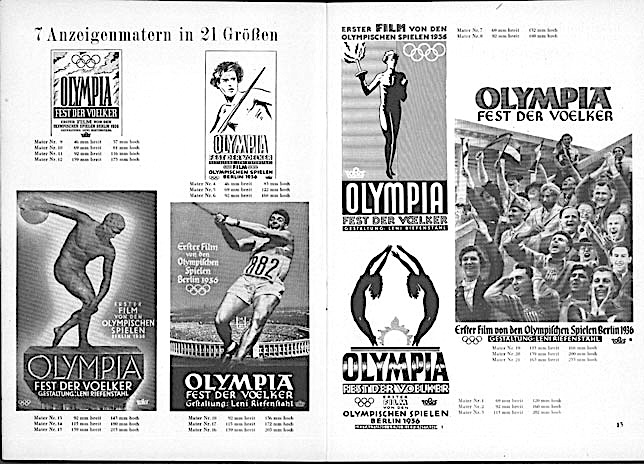

Leni Riefenstahl's message in the above Werberatschlag:
Foreword by Leni Riefenstahl to the OLYMPIA FILM
If the film of the Olympic Games is only now being shown for the first time, this already says that it was never intended as a topical reportage of the Games. This task has been fulfilled excellently by the newsreels.
When I was commissioned to make this film, I immediately realized that I had to express the spiritual idea of the Olympic Games beyond the realistic events, that I had to shape the inner forces that give the sporting battles their greatness and value. The eternal longing in man for perfection and beauty, the struggle and the unifying Olympic idea were the main motifs I saw in my task.
In the prologue section of the films, the ideal of the classical figures is replaced by the living realization of the fighter of today.
He is joined by female figures who embody the longing from which the flame is born again and again.
In the stadium, we experience the battle - the best in the world give their all for their country - for their nation. When the Finns fight, when Glenn Morris competes for a new world record in the decathlon, or when our Karl Hein swings the hammer with the utmost concentration, then we experience beauty and struggle united in the most glorious harmony in these images.
So this film should not only be a souvenir of the unforgettable days of the Olympic Games in Berlin, it should become an incentive and symbol for young people to become even more beautiful, even more perfect.
I would like to express my deepest thanks to all my colleagues and the numerous organizations that helped to realize this work. They have helped to create a sporting document that will tell future generations about the most glorious and magnificent battles in sporting history - the XI Olympic Games in Berlin.
Other original 1936–1938 German film publications in our Collection:





We also have some 1936 issues of the Film–Kurier Tageszeitung in our Collection, which have speciual coverage on the film. We show one below:
